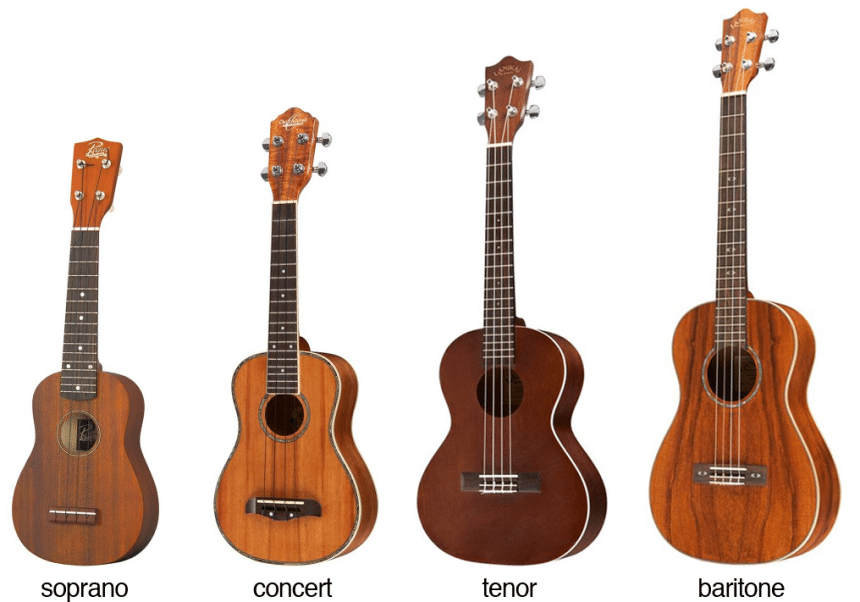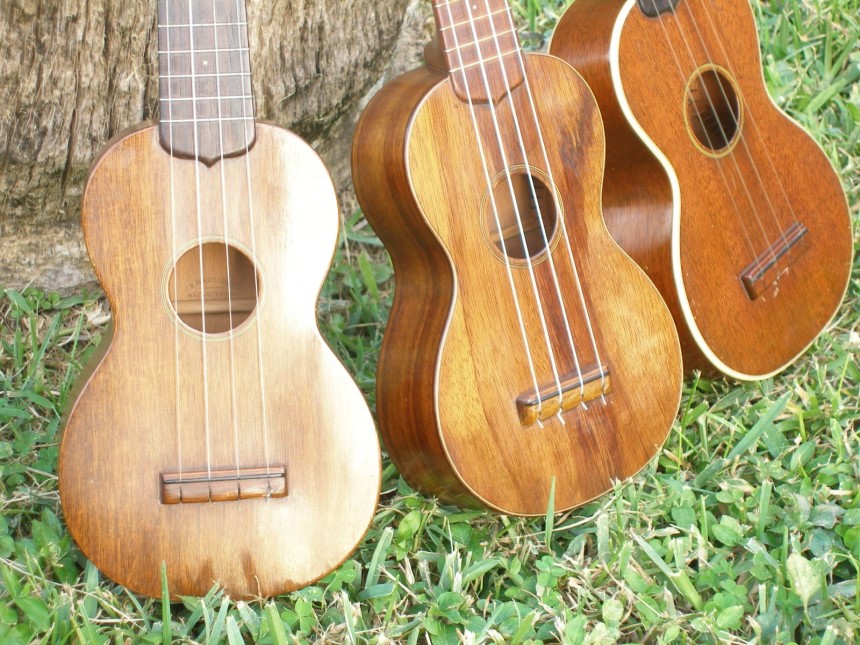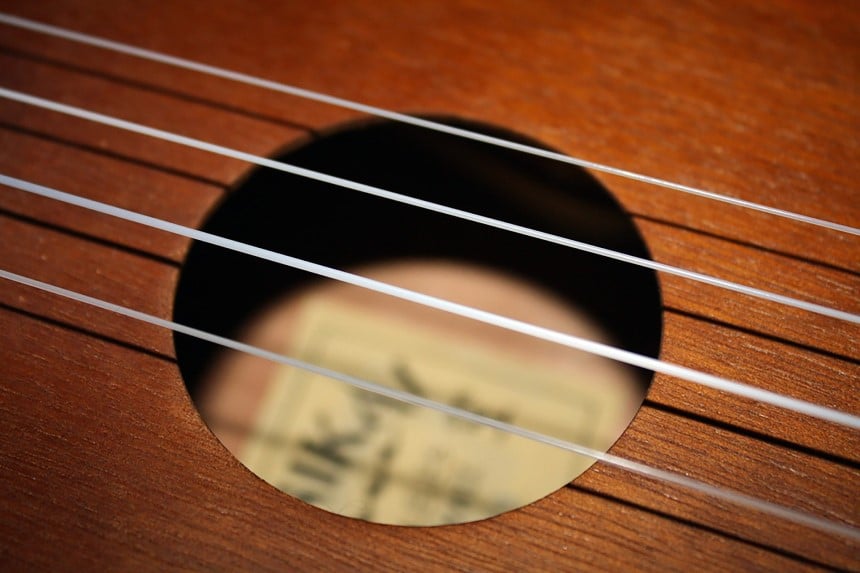Did you know that the ukulele belongs to the lute family of instruments? Learning how to play it is also easy, which explains the popularity of this instrument in recent years. You ought to know how to choose a ukulele if you are looking to own one or gift it to someone with a keen interest in the same. Many factors come into play in the selection process. Herein, we discuss some of the main elements you must bear in mind when choosing this instrument.
When shopping for the ukulele, reviews from experts in music and feedback from previous users plays a critical role in helping you make an informed choice. According to many evaluations on the wide web, the Kala KA-BG mahogany baritone ukulele is one of the best units in the market. Quality craftsmanship and the traditional white binding are some of the features that have made this unit an ideal choice for many ukulele players.
Choosing a ukulele Trusted Source Four strings good: Reclaiming the ukulele | Music | The Guardian Classical purists may not agree, but the ukulele is capable of much much more than tinkling out jaunty George Formby favourites. www.theguardian.com may seem like the most straightforward task for you, but it is not. As instruments in this category became widespread, many producers emerged in the market, making it hard for one to find a suitable match without intense and informative research. Buying ukuleles from reputable brands like Kala and others in the market is the easiest way to get the best without too much hassle. Here are some of the fundamental elements that you ought to look at when choosing a ukulele.
 The body size of the ukulele is among the principal elements that you must pay attention to. They come in different sizes named after the common voice types in music. Interesting to note is that all the sizes available are appropriate for both beginner and seasoned ukulele players. This, however, is not to say that they are all the same size. Below we dive deep into the intricate details of the ukuleles regarding dimensions to help you familiarize yourself with them. There are a total of four standard sizes that you will find in stores that stock them.
The body size of the ukulele is among the principal elements that you must pay attention to. They come in different sizes named after the common voice types in music. Interesting to note is that all the sizes available are appropriate for both beginner and seasoned ukulele players. This, however, is not to say that they are all the same size. Below we dive deep into the intricate details of the ukuleles regarding dimensions to help you familiarize yourself with them. There are a total of four standard sizes that you will find in stores that stock them.
The soprano ukulele is the smallest among the four sizes available. Many players recognize this size as the authentic traditional ukulele due to a host of factors. For this reason, the soprano variation of this musical instrument is referred to as the standard size. It measures around twenty-one inches, and the playability is suitable for those who are just starting with playing. The scale length, on the other hand, is thirteen inches. Although it may be a perfect choice for many people, it is not appropriate for those with big hands.
Concert ukuleles are slightly bigger than the soprano ones, with an overall measurement of twenty-three inches. The scale length also measures two inches more than the soprano one standing at fifteen inches. The output for this unit is more profound and louder when in comparison to the soprano ukuleles. The sound it offers is closer to the soprano than it is to the other sizes we have in the market. Mid-range voice is how the output from the concert ukulele can be described. The size makes it a good choice for those with a medium build. The fret distance is wider but not necessarily significant, offering more room for fingers to move. Anyone looking for a ukulele that produces the classic sound but bigger than the soprano option should consider the concert variation.
Professional ukulele players opt for the tenor ones for many reasons. They offer better projection and resonance than the concert and soprano ukuleles. The fingerboard for units in this collection is roomier, allowing people with relatively large hands to play painlessly. The scale is seventeen inches, while the overall length of the tenor ukulele is twenty-six inches. The tenor models of this musical instrument boast larger spaces between the frets, the highest number of notes, and a full dynamic range that allow for better output from the ukulele. The tenor size is an appropriate choice for those who are becoming masters at playing the ukulele. The sound from this type is close to that produced by guitars.
This is the largest variety of ukuleles that you will come across when shopping for one. If you want the music, you play to sound deeper and soul reaching the baritone ukulele is your answer. Interestingly, some people do not consider models in this category ukuleles as they share a host of features with guitars, and the output is similar. To buy the best baritone ukulele, you have to review the many options in the market using other elements to reach a decision. The scale length for products in this family is nineteen inches. This dimension makes it possible for people with large hands to play the ukulele.
Tonewood is one of the fundamental elements that you cannot overlook. This feature determines numerous aspects such as durability, quality, and type of sound produced. Below we discuss the ukulele tonewood types.
 Mahogany
MahoganyMahogany is the top choice that most manufacturers in this industry opt for. Ukuleles made from this wood produce soft and warm tones, which improve the quality of the sound by a wide margin. Whether you are looking for the best bass ukuleles or any other variation, consider choosing those that feature mahogany construction. This wood is used in different sectors due to its hardwearing properties. Ukulele manufacturers that want to give buyers value for their money utilize mahogany.
When ukuleles first made it to the market, they were all made of koa. This wood, also known as the acacia koa, is an indigenous species found in the Hawaii region. Ukuleles originated from this region which explains the popularity of koa in production. The exceptional grain patterns and distinctive tones are why most professional bands prefer to use koa ukuleles. Access to this tonewood is not easy, which explains why manufacturers choose to use readily available options.
Spruce is a common material in the production of instruments, including but not limited to guitars and ukuleles. It is an exotic wood variation common in ukulele tops and shines on the high areas. Spruce allows the units to produce dynamic mid ranges that performers are after.
Manufacturers use rosewood to design the back, sides, and fingerboard of ukuleles. This dense wood is also ideal for body construction, but producers tend to mix it with softwood to enhance functionality and functionality in different ways. Rich overtones and low-end vibrant transmissions are among the top likable features of this wood in ukulele production.
Cedar is a top choice for Ukulele producers who want to bring the best performance to the market. This wood has a lighter tonewood than the other materials that we discussed above. This makes the product responsive to both fingerpicking and strumming. With a cedar ukulele, you can achieve soft, warm, and dark tones. This versatility in tone is the most sought-after feature, which is why you should consider a cedar ukulele.
Another common question that most ukulele buyers have to answer before placing an order is whether to buy solid wood or the laminated variety. Solid wood ukuleles feature one layer of wood construction, which results in better resonance and vibration. On the other hand, the laminated alternative features several layers of thin wood in the design. This type of construction is more manageable. Ukulele producers bring laminated options to the market to cater to the needs of people from all walks of life.
Both variations have pros and cons that you should evaluate before deciding on the one to buy. For starters, the prices differ for these two options. Solid wood instruments are known to cost more than laminated ones. This is not any different for the ukulele. If you are in a position to spend more and get better quality tone and durability, consider getting the solid wood alternative.
The cost of acquiring a ukulele and maintaining it is something that you have to consider before settling on one to buy. The prices for the numerous units present in stores differ due to many factors. Choice of material, craft, and size are among the things that dictate the price. Additionally, reputable companies tend to charge more for their products when compared to those that are just starting. Set a budget after researching to know the approximate price for the ukulele that you want. This will help prevent spending more on the instrument than you can afford.
Read reviews by other buyers to ascertain whether the model you want is worth the price tag. According to seventy-six percent of reviews left by other users for the Vorson FSUK-1 electric ukulele, it is one of the affordable options. Instruments in this family with additional features also tend to cost more than those with fundamental elements only. Buying a cheap ukulele has its downsides, including poor quality sound. Invest in a good model from a renowned brand to avoid disappointments later.
The factors we discussed above are the main elements but not the only ones that you need to think about. When reading about and familiarizing yourself with ukuleles, you will come across other intricate aspects that need consideration. Here are some of the other things that you need to consider.
This refers to the string action necessary for the ukulele to perform the tasks that it has been designed for. The length between the top of the fret wire and the strings determines the type of action. Lower action is most preferred as it reduces the amount of pressure required to play a musical instrument. There ought to be a balance so that the action is not too low, as this will produce a buzzing sound from the strings that will distort the sound from the instrument.
 Strings play a vital role in the type and quality of sound that a ukulele produces. Companies that bring products in this family to consumers have an assortment of strings to pick from. Good strings avail the ideal tension to make playing a breeze and enhance excellent sound production. When choosing the string type, go for durable options that are not costly to replace when the time comes. Certain brands have made a mark in the market, and you can choose to buy ukuleles that feature them in the construction.
Strings play a vital role in the type and quality of sound that a ukulele produces. Companies that bring products in this family to consumers have an assortment of strings to pick from. Good strings avail the ideal tension to make playing a breeze and enhance excellent sound production. When choosing the string type, go for durable options that are not costly to replace when the time comes. Certain brands have made a mark in the market, and you can choose to buy ukuleles that feature them in the construction.
Shopping for a ukulele does not have to be a challenging task. Multiple resources on the wide web provide the necessary information to guide you in your search for the perfect unit. You have various factors to consider to guarantee that the model you go for will deliver the sound quality you are after and that it will serve you for many years to come. Most people recommend buying from reputable brands whose construction and material quality is top-notch.
Seasoned ukulele players may have an easier time picking the appropriate choice over those who are just getting started or buying the instrument for someone. How to choose a ukulele article are numerous on the internet, but not all of them have the correct information. Use authoritative sites in the music industry to get the appropriate guide to help you in the selection process.